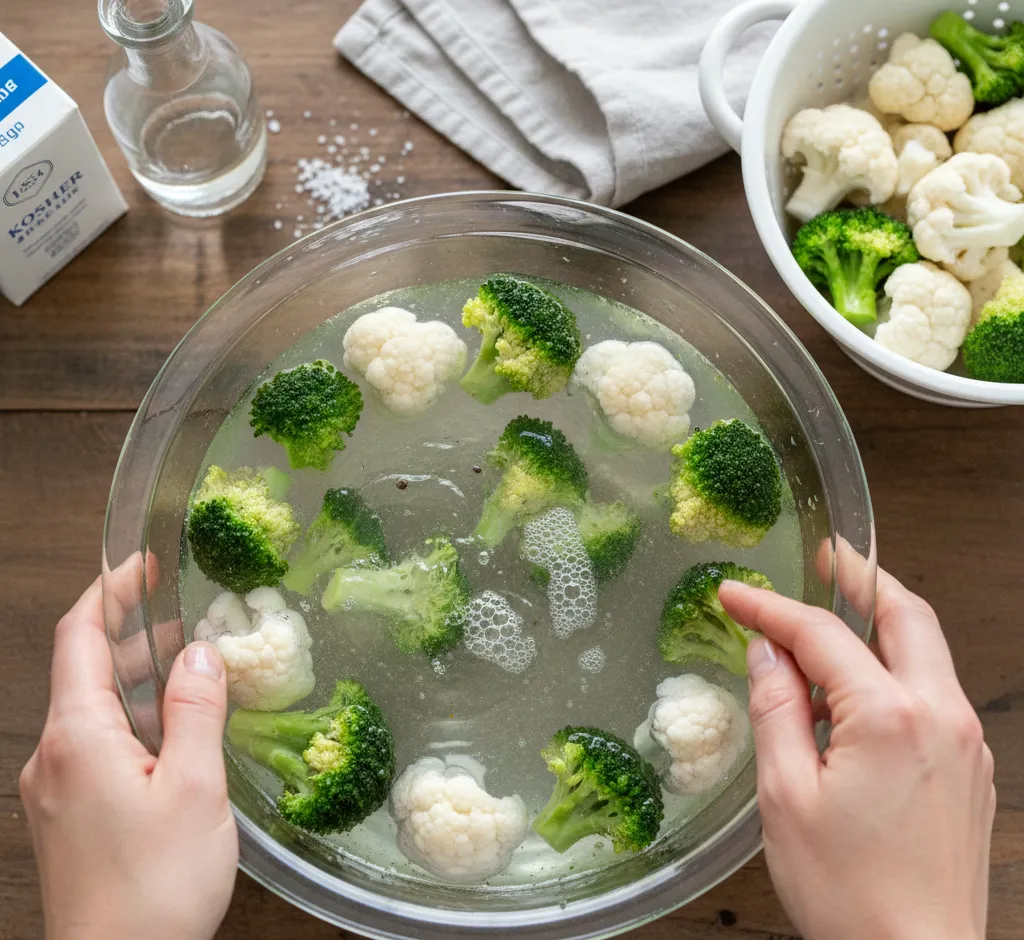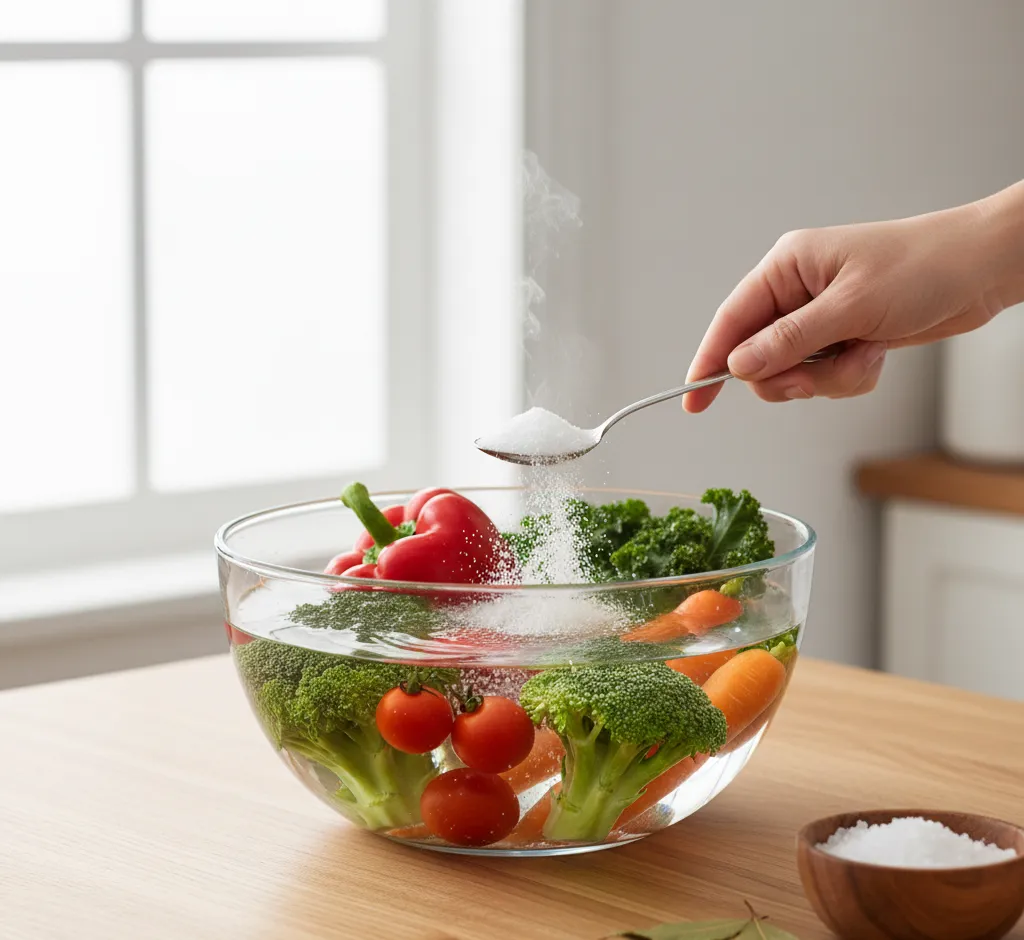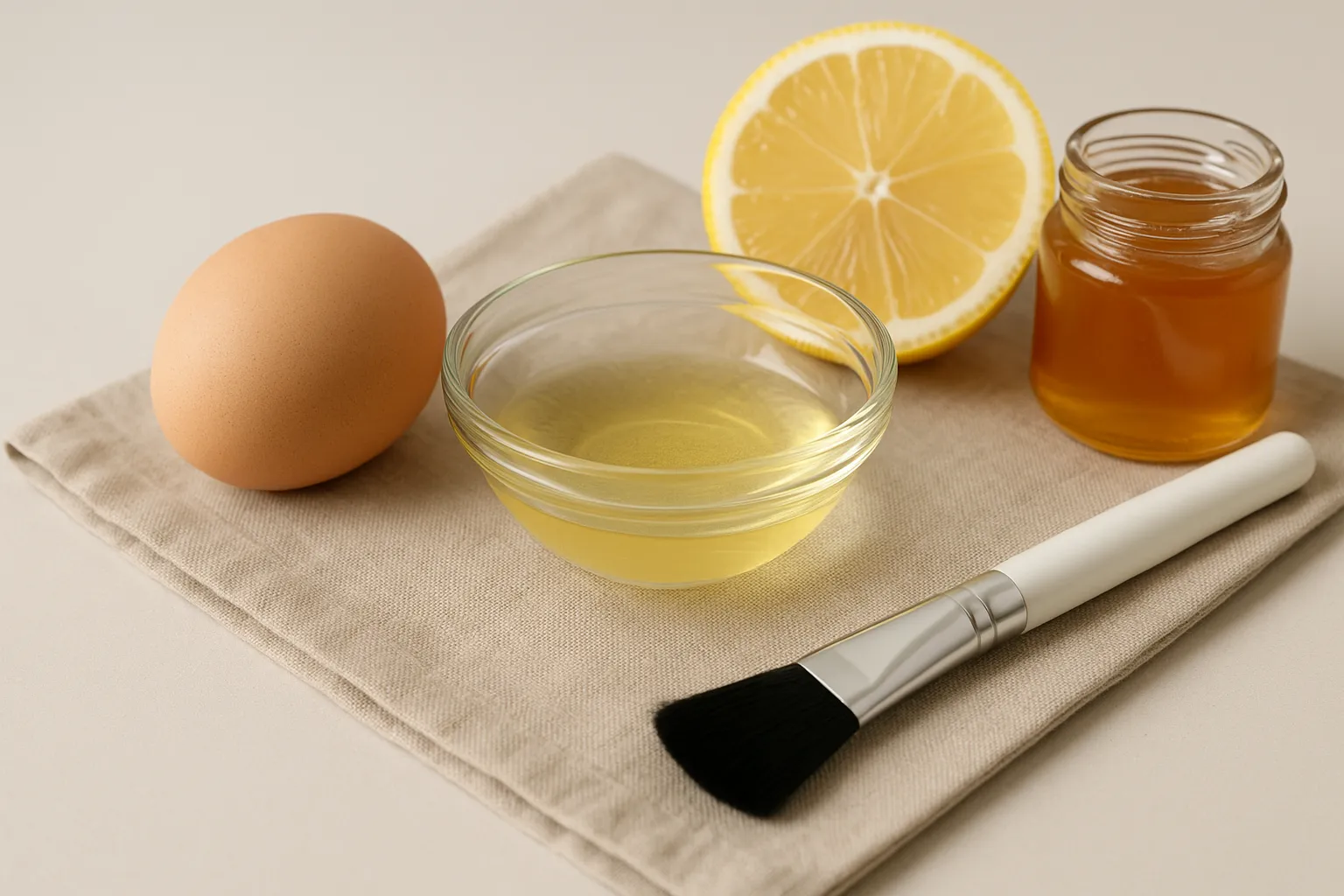The Essential Guide to Cleaning Broccoli and Cauliflower: Tips for Maximum Freshness and Safety
Learn the best methods for cleaning broccoli and cauliflower, including the quick rinse and the essential soaking bath (salt or vinegar solution), to remove dirt, pests, and residue for maximum food safety and freshness.

Broccoli and cauliflower, members of the nutrient-dense cruciferous vegetable family, are staples in healthy cooking. From vibrant salads to comforting roasts, their versatility is unmatched. However, their dense, intricate florets can easily trap dirt, small insects, and pesticide residue. To ensure you’re consuming the safest and freshest possible produce, a thorough cleaning process is essential. This guide will walk you through the best methods for cleaning these two popular vegetables.
Why Cleaning Cruciferous Vegetables is Crucial
Unlike smooth-skinned produce, broccoli and cauliflower have countless tiny crevices where contaminants can hide. While most commercially grown produce is relatively clean, the risk of consuming residual dirt, wax, or unwanted biological matter necessitates proper preparation. A good cleaning doesn't just improve safety; it can also affect the texture and taste of your final dish.
Method 1: The Quick Rinse (For Lightly Soiled Produce)
If your produce is visibly clean, a simple rinse may suffice.
- Prep the Head: If you are planning to use the whole head, you can skip cutting for now. If you prefer to clean the florets, use a sharp knife to cut the head into manageable, bite-sized pieces.
- Rinse: Place the whole head or the cut florets into a large colander. Run them under cool, running water. Ensure the water pressure is gentle enough not to damage the delicate florets but strong enough to dislodge surface contaminants.
- Dry: Gently shake the colander. Use a clean kitchen towel or a salad spinner to remove excess moisture. This is especially important if you plan to roast or sauté them, as residual water prevents proper browning.
Method 2: The Soaking Method (The Best Practice)
This is the most effective method for cleaning broccoli and cauliflower, especially for removing trapped dirt, small worms, or insects.
Step 1: The Initial Cut
For the most effective cleaning, it is best to separate the head into florets before soaking. Cut the broccoli or cauliflower into the size you plan to cook with. If you are cleaning a large quantity, consider doing this in batches.
Step 2: The Soaking Bath
Prepare a large bowl or clean sink with cold water and one of the following additions:
- Salt Water Solution: Add 1-2 teaspoons of salt (kosher or table) per gallon of water. Salt is mildly abrasive and helps draw out small insects and larvae from the tight spaces.
- Vinegar Solution: Add 1 part distilled white vinegar to 3 parts water. The acidity of the vinegar is excellent for killing bacteria and dissolving some pesticide residues. However, **do not soak for too long**, as vinegar can slightly alter the texture and taste.
Step 3: The Soak and Swirl
Submerge the florets completely in your chosen solution. Allow them to soak for 15 to 20 minutes. While soaking, gently swirl the water with your hand every few minutes. You may notice small, dark pieces (dirt or insects) floating to the surface—this is a sign the cleaning is working.
Step 4: The Final Rinse
Drain the soaking water and transfer the florets back into a colander. Rinse them thoroughly under fresh, cool running water to remove the salt or vinegar residue. A good rinse is crucial to ensure no off-flavors remain.
Step 5: Proper Drying
Drying is non-negotiable for optimum cooking. Use a salad spinner for the quickest and most efficient drying. Alternatively, spread the florets on a clean baking sheet lined with paper towels and allow them to air dry for 15-30 minutes, patting them gently with another towel.
Important Cleaning Do's and Don'ts
- DO always cut off and discard the large, tough base/stem of the cauliflower and broccoli heads.
- DON'T use detergent, dish soap, or commercial bleach. These chemicals are not safe for consumption and can permeate the florets.
- DO consider cleaning the vegetables only right before you plan to use them. Washing them too far in advance can introduce moisture, which accelerates spoilage and encourages bacterial growth during storage.
- DON'T wash pre-cut, bagged florets that explicitly state they are 'pre-washed' or 'ready-to-eat,' as this can introduce new contamination.
By following the soaking method, you can be confident that your broccoli and cauliflower are clean, fresh, and ready to be transformed into a delicious and healthy meal. Proper cleaning is a small but vital step in maximizing the safety and enjoyment of your home-cooked dishes.


